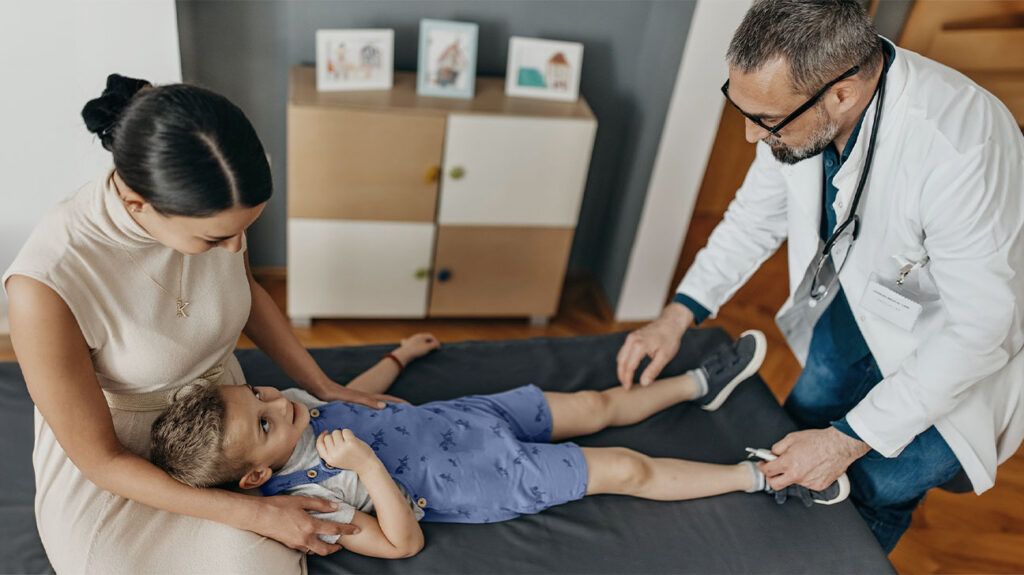The Becker muscular dystrophy (BMD) age of onset ranges from 5 to 60 years. However, some sources suggest symptoms usually develop in a person’s teens or early twenties.
BMD is a type of recessive muscular dystrophy that usually affects male children. It occurs due to a recessive, X chromosome mutation. It is a less common and generally less severe type of muscular dystrophy compared with Duchenne muscular dystrophy.
The condition is associated with the loss of ability to walk. It may lead to complications, such as heart failure and liver and lung function issues.
This article explores at what age symptoms of BMD may start. It also discusses possible symptoms, causes, and treatment options for BMD symptoms. Finally, it advises when someone may consider speaking with a doctor.
A note about sex and gender
Sex and gender exist on spectrums. This article will use the terms “male,” “female,” or both to refer to sex assigned at birth. Click here to learn more.

BMD is a rare disorder. According to a 2022 systematic review and meta-analysis of 25 studies, the estimated prevalence is
Symptoms of BMD start at different times for different people.
Compared with the
BMD usually appears in children at around 11 years old but may occur as late as 25 years of age. The severity of symptoms varies greatly among individuals living with BMD.
According to the American Academy of Orthopaedic Surgeons, BMD progresses over the course of decades. Some people living with BMD may not be able to walk and may require the use of a wheelchair by the age of 30. Others may be able to use minor mobility aids, such as a walking cane.
The average life expectancy of someone living with BMD is between ages 40 and 50. Typically, as the disease progresses, a person will continue to lose mobility and require more support.
BMD typically
Muscle loss often starts in the muscles in the following areas:
- shoulders
- hips
- thighs
- pelvis
Symptoms and signs can include:
- frequent stumbling
- difficulty walking
- enlarged calf muscles
- trouble running or jumping
- falling frequently
- difficulty standing up from a sitting or lying position
- limited endurance
- difficulty climbing stairs
BMD can also lead to several complications. These may also cause additional symptoms or concerns for treatment.
Possible complications associated with BMD include:
- progressive liver and lung dysfunction
- cardiomyopathy
- problems with thinking or memory
- bone fractures
- scoliosis
- loss of the ability to walk
BMD is a type of genetic disorder, which means it
People living with BMD have a mutation in a protein known as dystrophin. The
The condition is recessive on the X chromosome. This means that people born with two X chromosomes (typically assigned female at birth)
This is why BMD occurs almost exclusively in males.
Treatments for BMD
Treatment options can include:
- physical therapy
- assistive devices, such as walkers, canes, or wheelchairs
- surgery to help correct spinal curves or maintain mobility
- medications, which may include corticosteroids
Caregivers who suspect that their child may have BMD or other forms of muscular dystrophy should consider discussing their concerns with a healthcare professional, like a pediatrician. They can run tests to check for the condition, may refer to healthcare professionals who specialize in the condition, or begin treatments.
Diagnosis often includes:
- physical examination
- review of personal and family medical history
- lab tests such as muscle biopsies, blood tests, and genetic testing
People living with BMD may consider speaking with a healthcare professional if they experience any new or worsening symptoms.
BMD typically starts in a person’s early teens or twenties. However, the onset can range from ages 5 to 60 years.
BMD is a genetic condition that typically affects males.
The symptoms of BMD include difficulty walking, frequent falls, and difficulty standing up from a sitting or lying position. It may also lead to complications, such as cardiomyopathy, bone fractures, and scoliosis.
Treatment cannot cure the condition. However, therapies can help maintain mobility, lessen symptom severity, and help treat or prevent complications.
Caregivers may consider speaking with a healthcare professional if they think their child may be living with BMD.
